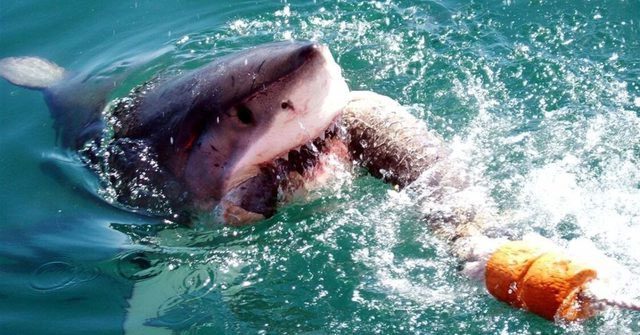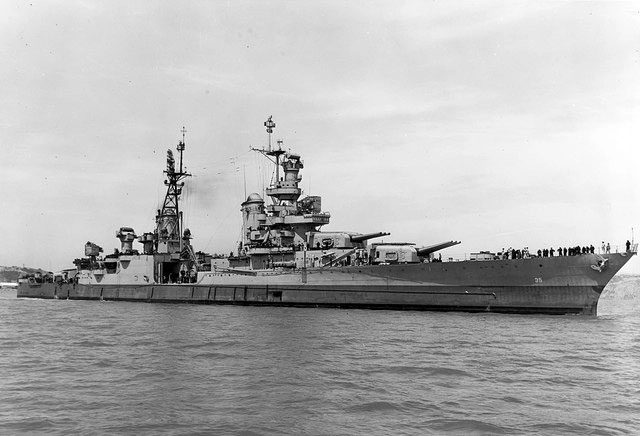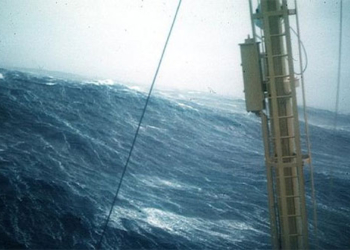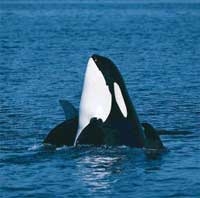In the impression of many, sharks are seen as extremely dangerous creatures, and this is not incorrect. Historically, there have been recorded incidents of shark attacks that claimed the lives of at least 150 people.
On July 30, 1945, an American warship was struck by two torpedoes from Japan, and the ship sank in just 12 minutes. As a result, 900 sailors survived the disaster, but they could not breathe a sigh of relief, as they now faced a swarm of sharks. Even under the most cautious estimates, at least 150 people lost their lives to the jaws of sharks before rescue efforts arrived four days later.

In a shark attack that claimed the lives of at least 150 people.
Let’s rewind time to the past. On July 29, the USS Indianapolis was sailing from Guam without escort, to join the USS Idaho in Leyte Gulf, Philippines, preparing for a confrontation with Japan.
Just after midnight, a Japanese torpedo struck the starboard bow, right where the ship’s fuel was stored: approximately 3,500 gallons (over 13,200 liters) spilled into the water and ignited, shooting flames high into the air.

Struck by a Japanese torpedo, the USS Indianapolis was torn in half. (additional content).
Then, a second torpedo struck near the middle of the ship, causing fuel tanks and powder magazines to explode. The chain reaction could not be stopped; the Indianapolis was torn in half. Meanwhile, the ship was still moving at high speed, and within seconds, it was flooded and sank just 12 minutes later. Approximately 900 of the 1,196 crew members survived the explosions and were forced to jump into the water. Many thought they could breathe a sigh of relief, but they had no idea that the worst time of their lives was about to begin.
“When I looked down at myself, I realized I was covered in oil, and my first instinct was to get away from it. You know, if it catches fire, you’re really in trouble. So the first thing to do when jumping into the water was to swim away from it, so I swam off. And then maybe around 5 or 6 AM, I was still swimming. I had nothing. I didn’t even have a life jacket, so I swam from midnight to 5:30 AM,” Lyle Umenhoffer, Seaman First Class, told History.
As the sun rose on July 30, alongside lifeboats and some debris from the ship, there were dozens of dead bodies, and hundreds of survivors were suffering from burns and wounds from the explosions, many of whom did not even have life jackets.

Animals attracted by the sound of the explosion.
To maintain order, they tried to pull injured individuals trapped among the debris and dead bodies, forming several small groups and one larger group of about 300 people. However, it wasn’t long before the sailors faced two extremely dangerous enemies at sea: thirst and sharks.
These animals were drawn to the noise of the explosion, the sinking ship, the oil spill, and of course, the blood. Among the many species of sharks living in the ocean, none are considered as fierce as the oceanic whitetip shark (Carcharhinus longimanus). The primary targets of these underwater predators were the floating corpses, but soon, the number of sharks attracted increased, and they began to target those who were swimming and struggling to survive on the surface.
According to the memories of the survivors, the men scattered over hundreds of square meters were attacked by dozens, even over a hundred sharks. They were attracted by the blood, so people tried to swim away from the injured and bleeding sailors.
The men scattered over hundreds of square meters were attacked by sharks.
“Throughout that time, the sharks never gave up. We had a cargo net with floats to keep it afloat. There were about 15 sailors on it, and suddenly, 10 sharks charged in, leaving nothing behind. This kept happening,” Eugene Morgan, Second Class Mate of the Boatswain, told History.
Most people felt immense fear and could not think logically. Some made the mistake of opening a can of Spam – but before they could eat anything from it, the meat attracted a swarm of sharks around them, forcing them to discard their rations.
Days passed, and despair increasingly overwhelmed the sailors: they began to hallucinate from the heat and thirst. Many could no longer endure and drank seawater – a death sentence due to salt poisoning. These sailors quickly fell into a state of madness, foaming at the mouth, with swollen lips and tongues. Consequently, they also posed a threat to the living, many of whom lost control and dragged their comrades down into the water as they died.
“The men began to drink seawater to the point of delirium. In fact, many of them had weapons like knives, and they would become so frantic that they fought with their own comrades without reason. Meanwhile, some who drank seawater experienced hallucinations, often believing that someone was providing fresh water and food beneath the sea. And they would swim down, which meant they would be taken by the sharks,” survivor Granville Crane told History.

Only 317 of the 1,196 crew members of the Indianapolis survived.
The massacre lasted for four days: although three U.S. Navy radio stations received news of the disaster, none of them relayed the information to their superiors: the commander of one station was drunk, while a commander at another station forbade his subordinates from disturbing him. The third commander thought it was a Japanese trick and also ignored the alarm. Meanwhile, the sailors learned that their best chance of survival was to gather in a group, and if possible, to stay in the middle of the crowd, as predators could easily approach them from the edges.
On the fourth day, at 11 AM, a Navy patrol plane spotted the survivors and signaled for help. A few hours later, a seaplane appeared and dropped rafts and survival kits to rescue the survivors. Minutes after midnight, the USS Doyle finally rescued all the remaining survivors.
Only 317 of the 1,196 crew members of the Indianapolis survived. It is estimated that at least 150 people perished due to the sharks, while the rest died from hallucinations, dehydration, and exhaustion. This was the worst shark attack in history and also the most horrific maritime disaster in the history of the U.S. Navy.





















































